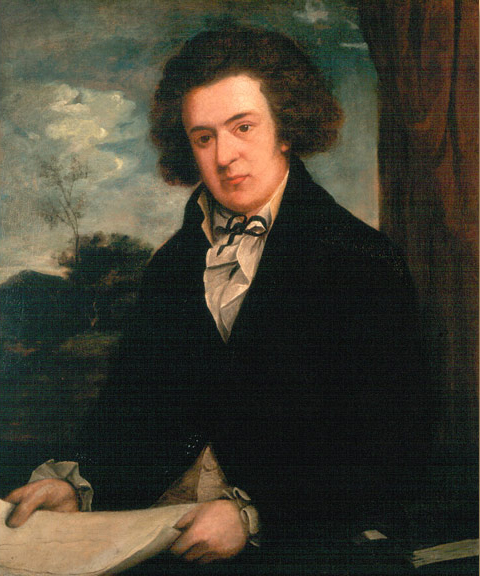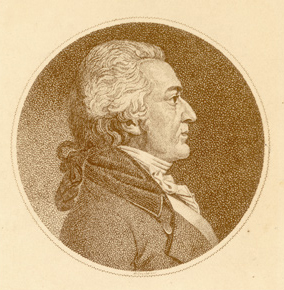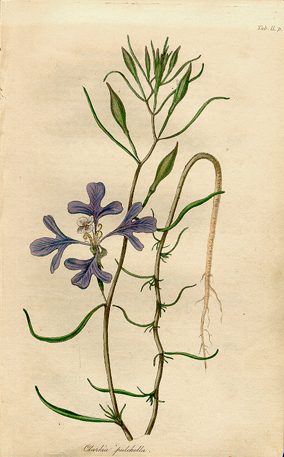Credentials
Benjamin Smith Barton
by Samuel Jennings[1]Samuel Jennings (d. 1834), a Philadelphian who spent most of his life in London, England, created the first abolitionist painting in America, Liberty Displaying the Arts and Sciences, for the Library … Continue reading
Date and size of original painting unknown. Courtesy American Philosophical Society.
Benjamin Smith Barton (1766-1815) at 37 years of age was the youngest of the five members of the American Philosophical Society to whom Jefferson referred Lewis. Barton expressed an interest, were his health sufficient, in accompanying Lewis at least part of the way. Initial promise but ultimate failure to fulfill exemplified Barton’s role in the history of the expedition and in other projects he contemplated.
His credentials were impressive. He was vice-president of the APS and an active contributor to its Transactions. His Elements of Botany, the first such text in the country, was just off the press. The second edition of his book, New Views of the Origin of the Tribes and Nations of America (1798), published a few years earlier, had deduced—from word-similarities—an Asian origin of native American peoples. For fourteen years he had been teaching botany, natural history and especially materia medica at the medical school. The last course, dealing with the substances of practice, was required of all medical students. Those who studied natural history with Barton were likely to become enthusiastic for the subject.
Jefferson’s Trust
Barton had the trust of Jefferson, to whom he had dedicated his book on languages, and for whom he had named a plant. Barton’s standing with his contemporaries in Philadelphia and Edinburgh was less secure. Alexander Wilson and especially Charles Willson Peale accused him of concealing sources of his work. Peale was mistaken in supposing that specimens of Swedish birds intended for the Peale Museum had been appropriated by Barton–the shipment simply had been delayed. Still, perhaps because of Barton’s failure to forward another item–a waxwork–explicitly intended for the museum, Peale did not revise his accusation that Barton “never scrupled to take the feathers of others to enrich his own plumage.”[2]See Lillian B. Miller, ed., The Selected Papers of Charles Willson Peale and His Family, 5 vols. (New Haven: Yale University Press, 1983-2000), 5:420-24 and 515n. It does appear that on at least two occasions Barton published as his own the observations and discoveries of others. One was the plant commonly known as twinleaf, which André Michaux (1746-1802) had found in Virginia and brought back to John Bartram for his garden. Barton saw it there, made drawings of it and, perhaps on the presumption that having recognized it as a new genus he could claim the privilege of naming it, did so: Jeffersonia diphylla.[3]Jeanette E. Graustein, “The Eminent Benjamin Smith Barton,” Pennsylvania Magazine of History & Biography 85 (1985), 423-438. The American Philosophical Society commissioned Michaux, … Continue reading
Having in distinguished fashion nearly completed his studies for the medical degree at Edinburgh, and honored by election as one of the four annual presidents of the Royal Medical Society, he abruptly left—without his degree but with funds of the Society that were repeatedly sought but never returned. The question of whether and where he obtained a degree remained a mystery until records obtained by the APS in 1970 yielded a diploma dated 31 August 1796 from Christian-Albrechts University at Kiel. That date was seven years after Barton’s confession to Benjamin Rush that he had no medical degree, but only three months after Barton’s letter to a German colleague asking help in procuring it. In the letter Barton claimed a degree “from an university which, I confess, I do not much respect,” a condescension that does not accord with the non-selectivity of the request.[4]Whitfield J. Bell, “Benjamin Smith Barton, M.D.,” Journal of the History of Medicine 26, (1971), 197-203.
Jefferson’s Disappointment
Benjamin Smith Barton
Engraving from a portrait by Charles B. J. F. de Saint Mémin (1770–1852)
From the collections of the University of Pennsylvania Archives.
(Date unknown) 3.75 x 3.75 in.
Jefferson may well have expected that Lewis’s initial contacts with Barton would have opened up the resources in natural history then available in Philadelphia–for instance in the persons of William Bartram, Charles Willson Peale and Bernard McMahon. But that seems not to have occurred. As open as colleagues’ resources were to Barton–William Bartram was a generous fount of information–his were closed to them. Barton’s old friend Muhlenberg complained of his reluctance to share, mystified that while he has twice shown Barton his herbarium, Barton had never shown his.[5]Graustein, 431. On the other hand, Barton did thank Bartram effusively in the introduction to Elements of Botany, but his reference to Bartram’s “original genius, and unaspiring science” neglects Bartram’s formal credentials: elected to APS at the age of 28, and the author of a book on natural history (1792) that made him “one of the most widely read American authors in Europe in the late eighteenth and early nineteenth centuries.”[6]Robert M. Peck, “Barton, Benjamin Smith.” American National Biography Online. Accessed July 8, 2003.
Finally, most important for the history of the scientific accomplishments of the expedition, its first plant specimens were consigned to Barton’s care. As Moulton notes, from this point began “the disassembling of the collection.”[7]Moulton, Journals, 12:3. The scattered plant specimens were largely recovered, but the natural history volume promised by Barton was never forthcoming. Though Barton was not solely at fault, he contributed to the delay in publishing that allowed others to “carr(y) off the honors that belong by right to Lewis and Clark.”[8]Elliott Coues, as quoted in David Freeman, Benjamin Rush: Revolutionary Gadfly (Indianapolis: Bobbs-Merrill, 1971), 260.
Sponsoring Frederick Pursh
In lieu of a portrait of Pursh, of which none are known to exist, it seems appropriate to represent him by one of the hand-colored engravings that he published in his Flora Americae septentrionalis (Flowers of North America) in 1813. Undoubtedly it was the unusual shape of its petals, and its striking color, that inspired Lewis to call the elkhorn “a singular plant”. Pursh, the first laboratory or “cabinet” botanist to describe it in proper terms and details, officially named it Clarkia pulchella—”Beautiful Clarkia”—in honor of William Clark. —Joseph Mussulman
In 1803, the Woodlands, the country estate and botanical garden of William Hamilton, had as its gardener a young man who had come from Germany in 1799—Frederick Traugott Pursh. In the dozen years he spent in the United States he was employed by some of the country’s leading botanists, including William Bartram, Bernard McMahon and Benjamin Smith Barton.
Under Barton’s sponsorship Pursh made two botanical explorations in 1806-07, and planned to provide the illustrations and descriptions for the natural history volume Barton was to provide for the Lewis and Clark specimens. Barton’s dilatoriness in providing for his needs—Pursh had become progressively more desperate, failing to find letters from Barton forwarding funds for sustenance—perhaps prompted Pursh to conclude that the volume was unlikely to be forthcoming. In any case, he left Barton, working first in Philadelphia with McMahon, who also had specimens from the Expedition, and then moving to New York. After two expeditions to the West Indies, he left for England, carrying with him the materials he had gathered and some of the specimens from the Lewis and Clark Expedition that Clark had given him to classify.
To the dismay of American naturalists, the resulting treatise describing and depicting 130 of Lewis’s specimens was published in Europe. Pursh made no attempt to disguise his indebtedness to the work of the two explorers, but on the other hand made no effort to return the specimens he had carried away. He returned to North America—to Montreal—in 1816, where a fire destroyed materials he had collected for a projected volume on the flora of Canada. He died in poverty at age 46.
Related Pages
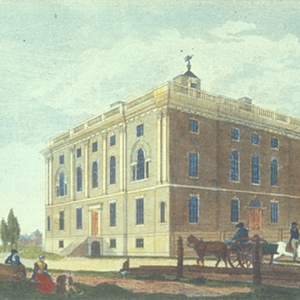

When Meriwether Lewis traveled to Philadelphia in 1802, his guide to the city was Mahlon Dickerson who gave him a survey of people and places well beyond the privilege or opportunity of most Philadelphians of the time.
February 27, 1803
No ordinary botanist
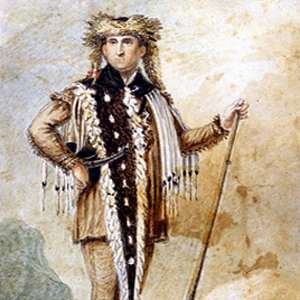

In Washington City, Thomas Jefferson asks Benjamin Smith Barton to train Lewis in natural history. In another letter, he asks the Illinois governor to treat with several Illinois tribes to obtain land.
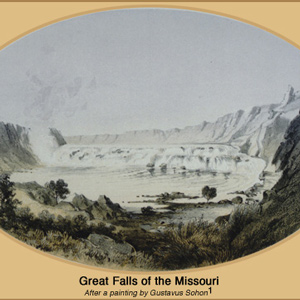

“I wished for the pencil of Salvator Rosa, or the pen of Thompson, that I might be enabled to give to the enlightened world some just idea of this truly magnifficent and sublimely grand object, which has from the commencement of time been concealed from the view of civilized man”
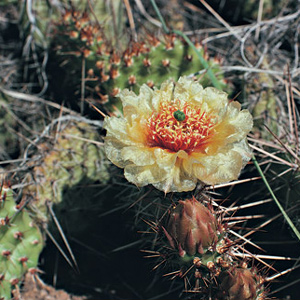

“The prickly pear is now in full blume,” he wrote on a mild early-summer day in 1805, “and forms one of the beauties as well as the greatest pests of the plains.”
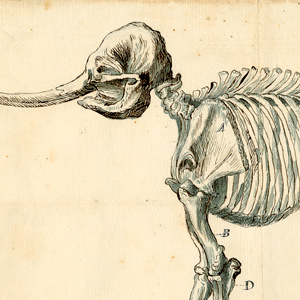

Would Lewis recognize living animals, examples of which he had seen only as bones in Philadelphia? Would the hunting parties of the corps unexpectedly find herds of mastodons, and packs of stealthy predators, or a lumbering solitary grazer previously never seen by humans?


What was it about du Pratz’s History of Louisiana that so interested Lewis? The book not only provided geographical information, it was the model that Lewis and Clark were to follow when reporting to President Jefferson.


“Reubin Field wounded a moos deer this morning near our camp,” Lewis wrote on 7 July 1806, adding, “my dog much worried.”
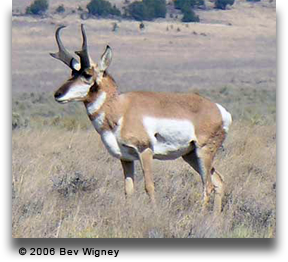

The men of the Corps of Discovery must have been electrified by their first sighting of the pronghorn antelope at the northeast corner of today’s state of Nebraska. Naturalists were eager to find the answers to some basic questions about them.
The Indian Vocabularies
by Bob Saindon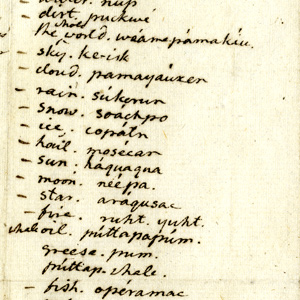

Due to the many unfortunate events which followed Lewis’s death, in 1809, the Indian vocabularies the captains had carefully collected are now lost, and were never made available to the public.
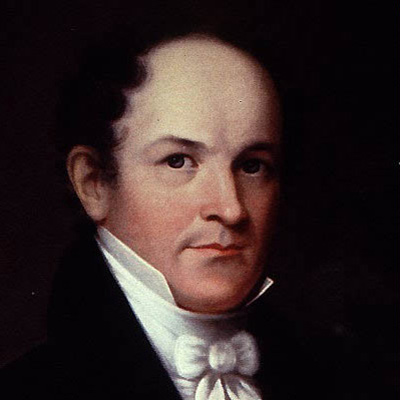

Everywhere Nuttall went he found new and curious plants. Unlike most who came before him, he collected even the unattractive plants. From him, long-leaved sage and white sage, first collected by Lewis, became known to science.
Jefferson’s Debt Paid at Last
Introduction to "Deciphering the Celestial Data"
by Robert N. Bergantino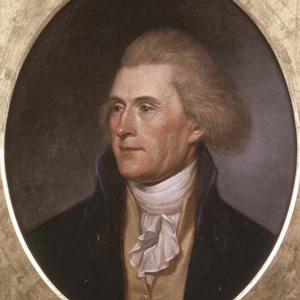

Lewis and Clark made celestial observations at “all remarkeable points on the rivers.” Hassler was selected to complete the longitude calculations from that data, but he never finished the job. Jefferson was not satisfied.
Notes
| ↑1 | Samuel Jennings (d. 1834), a Philadelphian who spent most of his life in London, England, created the first abolitionist painting in America, Liberty Displaying the Arts and Sciences, for the Library Company of Philadelphia. |
|---|---|
| ↑2 | See Lillian B. Miller, ed., The Selected Papers of Charles Willson Peale and His Family, 5 vols. (New Haven: Yale University Press, 1983-2000), 5:420-24 and 515n. |
| ↑3 | Jeanette E. Graustein, “The Eminent Benjamin Smith Barton,” Pennsylvania Magazine of History & Biography 85 (1985), 423-438. The American Philosophical Society commissioned Michaux, who was a prominent French naturalist and an experienced explorer, to follow the Missouri River in search of a water route to the Pacific Ocean. Michaux set out in June of 1793, but got no farther than Kentucky before it was learned that his secret objective was to raise an American militia for an attack on Spanish possessions west of the Mississippi. On Jefferson’s insistence the government of the French Republic called him home. |
| ↑4 | Whitfield J. Bell, “Benjamin Smith Barton, M.D.,” Journal of the History of Medicine 26, (1971), 197-203. |
| ↑5 | Graustein, 431. |
| ↑6 | Robert M. Peck, “Barton, Benjamin Smith.” American National Biography Online. Accessed July 8, 2003. |
| ↑7 | Moulton, Journals, 12:3. |
| ↑8 | Elliott Coues, as quoted in David Freeman, Benjamin Rush: Revolutionary Gadfly (Indianapolis: Bobbs-Merrill, 1971), 260. |
Experience the Lewis and Clark Trail
The Lewis and Clark Trail Experience—our sister site at lewisandclark.travel—connects the world to people and places on the Lewis and Clark Trail.
Discover More
- The Lewis and Clark Expedition: Day by Day by Gary E. Moulton (University of Nebraska Press, 2018). The story in prose, 14 May 1804–23 September 1806.
- The Lewis and Clark Journals: An American Epic of Discovery (abridged) by Gary E. Moulton (University of Nebraska Press, 2003). Selected journal excerpts, 14 May 1804–23 September 1806.
- The Lewis and Clark Journals. by Gary E. Moulton (University of Nebraska Press, 1983–2001). The complete story in 13 volumes.
